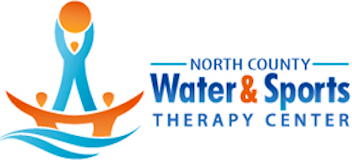Most people have heard of the Temporomandibular Joint, or TMJ, when referring to pain in the jaw region. Many people consult their dentist when issues of the TMJ arise, but did you know that a physical therapist can help, too?
The Temporomandibular Joint (TMJ) is the joint that connects your mandible (jaw bone) to the cranium or skull. The joint creates a hinge that allows you to open and close your mouth, as well as create forward/backward and side to side movements with your jaw necessary for speaking and chewing. Pain related to the TMJ can be focused at the jaw itself or it can present in other areas such as pain in the ear, around the eye or even headaches. There are many reasons why one may have pain or dysfunction in the TMJ, commonly referred to as Temporomandibular Dysfunction (TMD), including direct trauma, repetitive movements, or gradual wear and tear of the joint with age, as may happen in any joint in the body. Repetitive movements may include activities such as teeth grinding or bruxism, clenching of the jaw, nail biting, and constant gum chewing. All of these activities cause the muscles surrounding the jaw to work excessively, potentially creating increased tension and pain in the muscles themselves as well as adding compression to the joint itself. If you have pain in your TMJ and currently do any of the activities above, simply stopping or limiting these activities may be the first step in decreasing your pain.
The alignment of your teeth can also cause TMD, which is where your dentist contributes to the treatment. Treatment from a dentist may include construction of a night guard to protect the teeth from damage due to improper alignment and/or grinding. However, would you be surprised to learn that your spine, specifically the position of your neck and head, can contribute to TMD? Try this little test: Sit or stand with good posture, then lightly close your jaw a couple times to bring your upper and lower teeth together and feel where the teeth contact each other. Now, turn your head to the right and lightly tap your teeth together. Now, turn your head to the left and lightly tap your teeth together. Did your upper and lower teeth make contact in the same places with your head in each of these different positions? Now, sit with slumped posture and lightly tap your teeth together. Any difference? Now lie down and repeat. Any difference? By now you can probably appreciate that different positions of your head and neck will affect your bite or the closing of your jaw. Improving alignment at the neck/head can help to place the jaw in a more optimal position so that less stress or abnormal forces are placed on the TMJ.
While a physical therapist cannot change the position or alignment of the teeth (the dentist is the expert for this), we can evaluate and treat problems in the neck/head that may be contributing to your jaw pain. If you have neck pain, jaw pain, frequent headaches, or a combination of any of these symptoms, contact a physical therapist to set up an evaluation.
